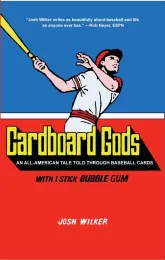According to the Gods: a 2011 Team-By-Team Preview
St. Louis Cardinals
Today I’m going to begin counting down the days until the opening of the 2011 baseball season by predicting the fortunes of each major league team on the basis of a card chosen at random from that team’s rubber-band-wrapped pack in my shoebox of baseball cards.
First up, the 2011 St. Louis Cardinals, a team whose season already seems to be in big trouble, what with an all-world slugger seemingly eying the exits and a top-flight pitching ace out for the year and beyond. What information can a 1975 Jack Heidemann card add to our understanding of the seemingly perilous season to come for the Redbirds?
First, the last name: I’m guessing it is pronounced, more or less, as “hide a man.” This does not seem to be a good omen for abundant success, instead suggesting the 2011 Cardinals will spend the year either fading into invisibility against their will or purposefully courting it, fugitive style, in order to avoid being apprehended, found guilty, and punished. Also, Albert Pujols is sometimes referred to as El Hombre, i.e., The Man, so maybe there’s a third interpretation of this harbinger: the Cardinals and their fans trying (impossibly, like a little boy attempting to turn invisible by clamping his eyelids shut) to hide a man from the outside interests that will, it seems, swoop in and take him away. For his part, Albert Pujols has said that he doesn’t like the nickname El Hombre, believing that there is only one Man in St. Louis, Stan “The Man” Musial, now in his tenth decade, arguably the greatest hitter still walking the planet (in terms of the adjusted statistic best able to provide a mathematical way of comparing hitters across eras, Stan Musial ranks behind only three other men still alive in career OPS+; two are the players most commonly and scornfully associated with the dubiously inflated stats of the steroid-era, Barry Bonds and Mark McGwire, and the third is Albert Pujols).
I can’t say for sure if this Jack Hide-A-Man card is trying to tell us something about Stan the Man or El Hombre, but I can say that the 1970s, when this card came out, were a rare decade of Cardinals irrelevance, the first decade since the 1930s to not feature Stan the Man and the first since the 1910s that didn’t include at least one pennant winner [update: see comments below for correction of this latter point]. Is the second decade of the 21st Century going to be the first since the Jack Heidemann era to feature this kind of prolonged hiding? I know from my mid- to late 1970s Cardinals cards that though the team had some stars—Lou Brock; Ted Simmons; Reggie Smith, briefly—it more generally was made up of a generally drab collection of guys just kind of passing through, holding bats on their shoulders and gazing off into the distance, vaguely distracted.
Jack Heidemann certainly fit this bill of a typical 1970s Cardinal journeyman, at least as I understood the nature of things from gazing at baseball cards. He had had just one season as a regular, years before displaying an admirably flashy droopy mustache/bushy sideburns combo as a Cardinal in this 1975 card (he, for one, wasn’t trying to hide). His one full season had been in 1970 for the mediocre Indians, when he was only 21. He led the league in sacrifice flies despite tallying only 37 total RBI for the year. Was this oddly skewed sacrifice flies to RBI ratio evidence of a job well done, or of a job that could have been done better?
I don’t know, but the next season, during a game in May, reigning Sacrifice Fly King Jack Heidemann raced into the outfield in an attempt to chase down a blooping popup hit by Tom McCraw of the Washington Senators, showing an admirable hustle that was, unfortunately (considering the troublesome trajectory of the blooper), being duplicated with mathematically exact precision in terms of the end point of each player’s sprint, by both left-fielder John Lowenstein and centerfielder Vada Pinson. All three Indians came together in a chain-reaction collision: Heidemann kicking into and tripping over the diving Lowenstein (who would have to be carried from the field on a stretcher), Heidemann then flipping end-over-end into the air, his metal cleats gashing the jaw of Pinson (who would require eight stitches), the timidly struck ball bounding a little ways on into the outfield and dying, no one vertical anywhere near it. McCraw clambered all the way around the bases for one of the shortest home runs ever hit in major league history, his manager in the Senators’ dugout, Ted Williams, presumably looking on with at least a hint of derision for McCraw’s hitting effort amounting to the same as one of Williams’ own bygone heroic fence-clearing laser shots of yore. There are men and there are men: Ted Williams, Albert Pujols, Stan Musial on one side, the rest of us connecting less completely and less forcefully in our endeavors and thus forced to just reach and lurch and hope for the best. I see Jack Heidemann, and, by extension, the 2011 St. Louis Cardinals, as among the latter group. I see Jack Heidemann coming up onto his elbows on the outfield grass just after windmilling through the air. He’s dazed and disoriented. Who am I? Where am I? What’s this blood? And why is everyone screaming?
***
How to enjoy the 2011 baseball season, part 1 of 30: Read the recent soulful book on baseball and family ties by Cardinals fan Will Leitch, Are We Winning?: Fathers and Sons in the New Golden Age of Baseball







You must be logged in to post a comment.